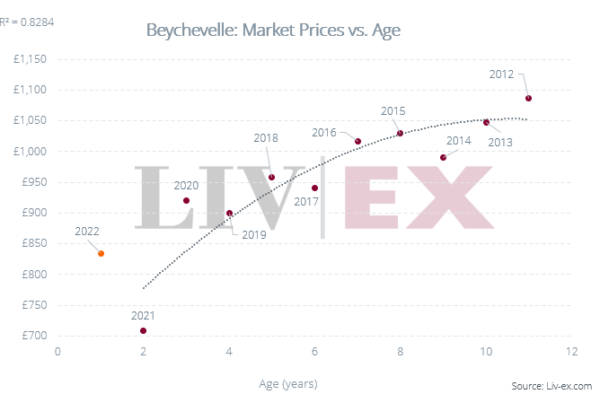- The secondary wine market has considerably broadened in Asia-Pacific over the past four years.
- Bordeaux’s dominance has declined since 2011, with Burgundy being the biggest beneficiary.
- Some national tastes to note include Singapore’s love of Italian wines, China’s interest in US wines, along with demand for Burgundy and Champagne in the ‘Rest of Asia’ (driven largely by South Korea).
The following article is an extract from our report, The fine wine market in Asia-Pacific. To read the full report, click here.
The broadening of fine wine buying across Asia
The trend in the secondary fine wine market over the past few years has been one of broadening and diversification. As education grows, tastes evolve and prices rise, buyers cast their nets wider chasing new passions, seeking new wines and looking for value. In the last decade, buying trends across Asia have followed this progression. New buyers coming to the market from the region’s myriad countries, each with their own cuisines and cultural mores, as well as the activities of wine trade bodies, have all started leaving their mark.
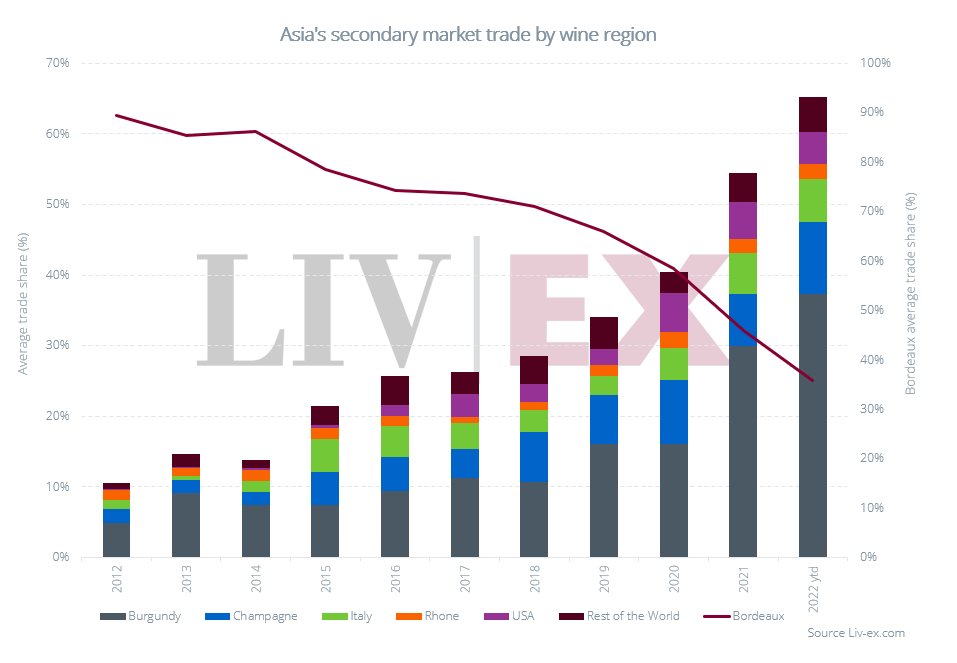
The pace of change has been most marked over the last four years, accelerated by the global pandemic. The following two charts show how the buying trends in Asia have closely reflected those in other major markets from 2019 to 2022.
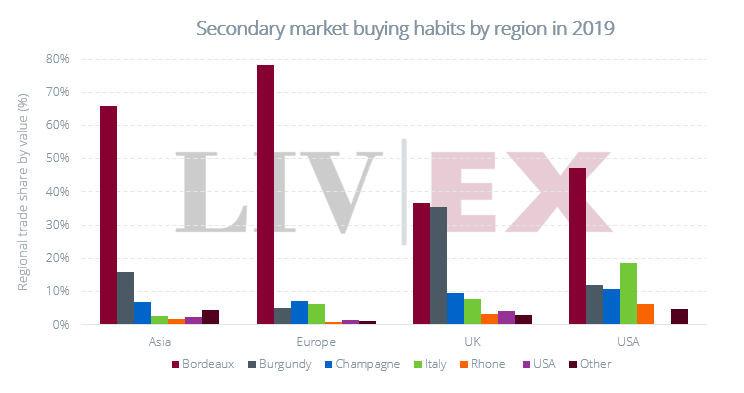
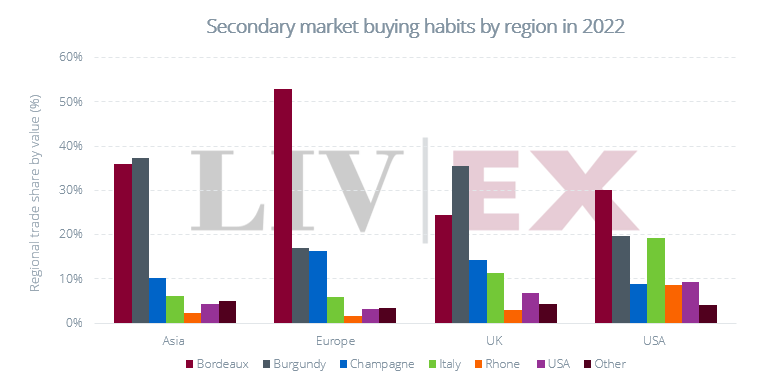
The most obvious change has been the decline in Bordeaux’s dominance, especially in Asia. In the beginning, many Asian collectors went after the most famous and prestigious names in fine wine. In most cases this meant the Bordeaux First Growths, especially Château Lafite Rothschild.
At the very height of the demand for Bordeaux in 2011, the region accounted for 95.2% of secondary market trade in Asia.
However, as the charts show, since then (and in line with other global markets) demand for Bordeaux has waned. Today it accounts for just 35.9% of Asian demand.
Burgundy’s rise to prominence
The big beneficiary of this change has been Burgundy, which has risen from less than 5.0% of buying in Asia a decade ago, to 37.3% in 2022.
Rare and exclusive, Burgundy quickly struck a chord with many of Asia’s growing band of wealthy wine collectors. As China and Hong Kong shifted their buying habits, the market for Burgundy accelerated after Bordeaux’s decline. However, the leading market for Burgundy in Asia has always been Japan.
Unlike many other Asian nations which favoured Bordeaux at first, Japan has a long affinity with Burgundy. The country is currently the third largest export market for all Burgundy wines by value and fifth by volume according to the Wines of Burgundy trade body.
Interestingly, 55% of Japan’s Burgundy imports are for white wines – a rarity in a geographic area renowned for its ‘red obsession’. This likely explains why Japan is also the biggest importer of Champagne in Asia. According to the Champagne Bureau, Japan is the third biggest global export market for Champagne by both value and volume. The trade body also reported that the Asian market seeing the fastest growth for Champagne is South Korea, where exports rose 60.7% by value between 2020 and 2021.
National buying trends in the secondary market
Just as Japan is the biggest importer of Champagne in Asia-Pacific, it also has the greatest interest in Champagne on the secondary market.
However, interestingly its taste for Burgundy has not been reflected in its secondary market demand so far. Given the weakness of the Yen, it may be that Burgundy prices are too great for many collectors, diverting them to better value options such as Bordeaux and Champagne. It may also be tied to consumption habits, drinking high value Burgundy in the on-trade and even a relative degree of supply and demand stability in the market.
China, by contrast, has much higher demand for Burgundy. Because it is a newer market, supplies may not be as readily available for in-demand wines, driving merchants to seek them out on the secondary market.
Elsewhere, Singapore’s taste for Italian wines, US wines in China and Burgundy and Champagne’s popularity in the ‘Rest of Asia’ (driven largely by South Korea) are other national tastes of note.
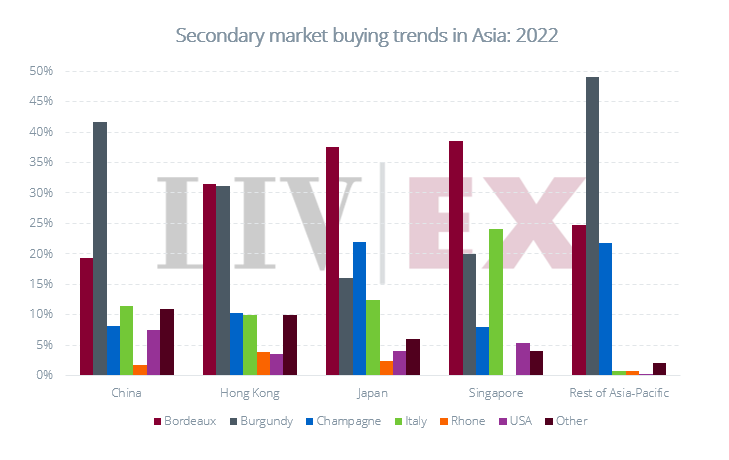
*Based on the activity of Liv-ex’s Asian members
The full report contains additional Liv-ex research and analysis on:
- Fine wine as an investment
- The development of fine wine investment
- The secondary fine wine market’s development within Asia-Pacific
- Changes in the Asia-Pacific market




